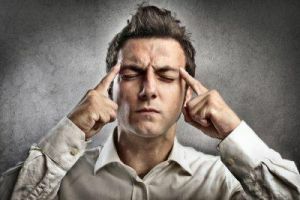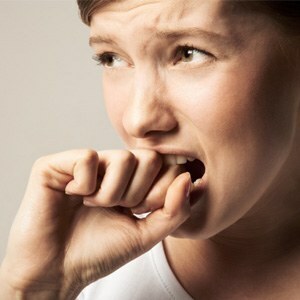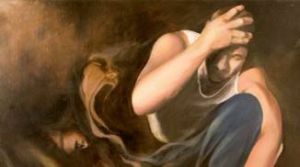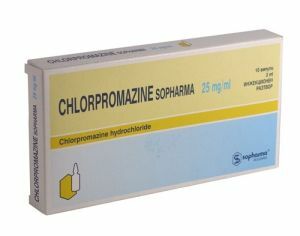 Psychomotor agitation refers to the category of mental disorders that occur with various diseases. This state is accompanied by unmotivated actions, making unnecessary movements and other unpleasant symptoms.
Psychomotor agitation refers to the category of mental disorders that occur with various diseases. This state is accompanied by unmotivated actions, making unnecessary movements and other unpleasant symptoms.
Currently, there are quite a few varieties of this state that have characteristic features. In any case, such a patient needs urgent medical attention.
Contents
- Description of the disease
- The nature of the disease
- Reasons for the deviations
- Variation in the variance
- Clinical picture
- Diagnosis
- Emergency care
- Medical care
- Danger and prediction
The essence of the disease
Psychomotor agitation is a mental disorder that is accompanied by increased motor activity. This condition provokes a variety of pathologies. Depending on this, there are quite a few varieties of psychomotor agitation.
This condition is accompanied by increased anxiety, irritability, a feeling of anger or confusion. Sometimes patients show aggression or behave completely inadequately.
Excitation duration can be different - from an hour to a week. The degree of manifestation of manifestations of this condition is affected by the underlying pathology.
Causes of abnormalities
Psychomotor agitation can be an acute response to a stressful situation that occurs in a mentally healthy person who finds himself in an extreme situation. It develops immediately after a trauma or a life-threatening condition.
Often a person develops motor anxiety, after which he falls into a stupor.
In addition, the disorder may be due to such conditions:
- Acute infectious pathology .They are accompanied by an intoxication damage to the nervous system as a result of
 exposure to the body of viruses or bacteria.
exposure to the body of viruses or bacteria. - Craniocerebral trauma .Also, psychomotor agitation may be a consequence of other brain lesions.
- Acute and chronic intoxication of the body .To them can lead poisoning with acrichin, caffeine, atropine. Also in this category includes alcohol delirium.
- Epilepsy .
- Hysteria .This condition can be a reaction of the body to external factors.
- Hypoxia and toxic brain damage .This condition can be observed in precomatous and comatose cases.
- Mental abnormalities .This category includes depressive psychosis, manic agitation, schizophrenia. Bipolar affective disorder can lead to psychomotor agitation.
- Delirium .By this term we understand the turbidity of consciousness, which is accompanied by imaginative delusions, visual hallucinations, a sense of fear.
Variations of the deviation
There are such varieties of psychomotor excitation, each of which is characterized by certain features:
- Catatonic excitement of - in most cases accompanied by impulsivity and impaired coordination of movements. Sometimes there is rhythm and monotony of action, as well as increased talk. This form of stimulation is usually a manifestation of schizophrenia.
- Gebefrenic excitation - may be one of the stages catatonic. It manifests itself in the form of a patient's foolishness, meaningless movements. Sometimes this condition is accompanied by the patient's aggression. This symptom is also often evidence of schizophrenia.
- The hallucinatory excitement of - is accompanied by tension and increased concentration. In addition, a person
 can have incoherent speech, changing facial expressions, aggressive movements and gestures. This syndrome often occurs in people with alcoholism. It belongs to the syndrome of clouding of consciousness and can talk about the development of schizophrenia or brain diseases.
can have incoherent speech, changing facial expressions, aggressive movements and gestures. This syndrome often occurs in people with alcoholism. It belongs to the syndrome of clouding of consciousness and can talk about the development of schizophrenia or brain diseases. - The delirious arousal of - develops as a result of the emergence of ideas of persecution, delusions, etc. People with such a violation are often very tense and aggressive. They can threaten, and sometimes use force. Therefore, it is important for such patients to provide the right therapy. This condition indicates schizophrenia, brain diseases and symptomatic psychoses.
- Manic excitement of - in this state the person has an upbeat mood, mental processes are accelerated, there is an increased desire for action, fussiness, inconsistent thinking. This condition often accompanies schizophrenia and is supplemented by delusions, hallucinations, and a violation of consciousness.
Clinical picture of
Symptoms of psychomotor agitation depend on the causes of the disorder. To external manifestations include the following:
- sharp aggravation of the main disease;
- inadequate human behavior;
- increased irritability;
- body movements that are not characteristic of humans;
- appearance of suicidal tendencies;
- aggressive behavior;
- lack of control over their behavior.
Diagnosis
It is not too difficult to diagnose this condition. A specialist can make an accurate diagnosis on the basis of a characteristic clinical picture.
In this case, the doctor must necessarily assess the degree of aggression and try to establish the causes of increased excitement.
Differential diagnosis of causes at the prehospital stage is not particularly important. The only exception is craniocerebral trauma.
Emergency care
Patient in a state of psychomotor agitation requires an urgent hospitalization in a psychiatric hospital. Therefore, when symptoms of this ailment appear, you should immediately call a specialized ambulance.
In the development of such a condition, the first aid to a patient can be rendered exclusively by a psychiatrist. The primary tactic of therapy is the urgent immobilization of a person. To do this, it is fixed with the help of wide bandages.
In complex cases, doctors are assisted by law enforcement agencies. If it is possible to establish contact with the patient, the doctor should conduct an explanatory conversation with him. The patient must necessarily say that he needs hospitalization and treatment in a psychiatric hospital.

Algorithm for emergency treatment for psychomotor agitation
Medical care
 After hospitalization of the patient, he is prescribed urgent medical help. At this stage, various types of tranquilizers are used, which quickly stop psychomotor agitation.
After hospitalization of the patient, he is prescribed urgent medical help. At this stage, various types of tranquilizers are used, which quickly stop psychomotor agitation.
This is indicated by the intravenous use of neuroleptics, which have pronounced sedative properties. For example, a doctor may prescribe Levomepromazine in a dosage of 50-75 mg or Clozapine - 50 mg.
One of the most effective remedies for ameliorating the symptoms of this condition is Aminazine. This drug should be administered intramuscularly. Dosage can be different - it all depends on the height, age and weight of the patient. The range is 25-100 mg. The use of this agent is supplemented with the same volume of novocaine 0.25-0.5%.Thanks to this, the person quickly calms down and falls asleep.
Attenuation of the level of excitation should not lead to a decrease in the intensity of therapy or observation of the patient. The fact is that the disease can return with renewed vigor. In this situation, a person will need to help again.
If the patient has previously been observed with specialists with the same syndrome, the relief of his symptoms is made with the help of the same drugs. However, in such a situation, a double dosage is indicated.
Danger and prognosis of
Provided that the symptoms of the disease are correct and timely, psychomotor agitation does not pose a danger to the life or health of the patient. After eliminating manifestations of the disease, the prognosis fully corresponds to the prognosis of the main pathology.
The greatest danger is presented by patients who have obvious catatonic and hallucinatory-delusional varieties of arousal. They are accompanied by unpredictable actions that can harm the patient and others.
Psychomotor agitation is a rather dangerous condition, which can be dangerous for the health of the person and others. Therefore, in such a situation, you must call an ambulance.



